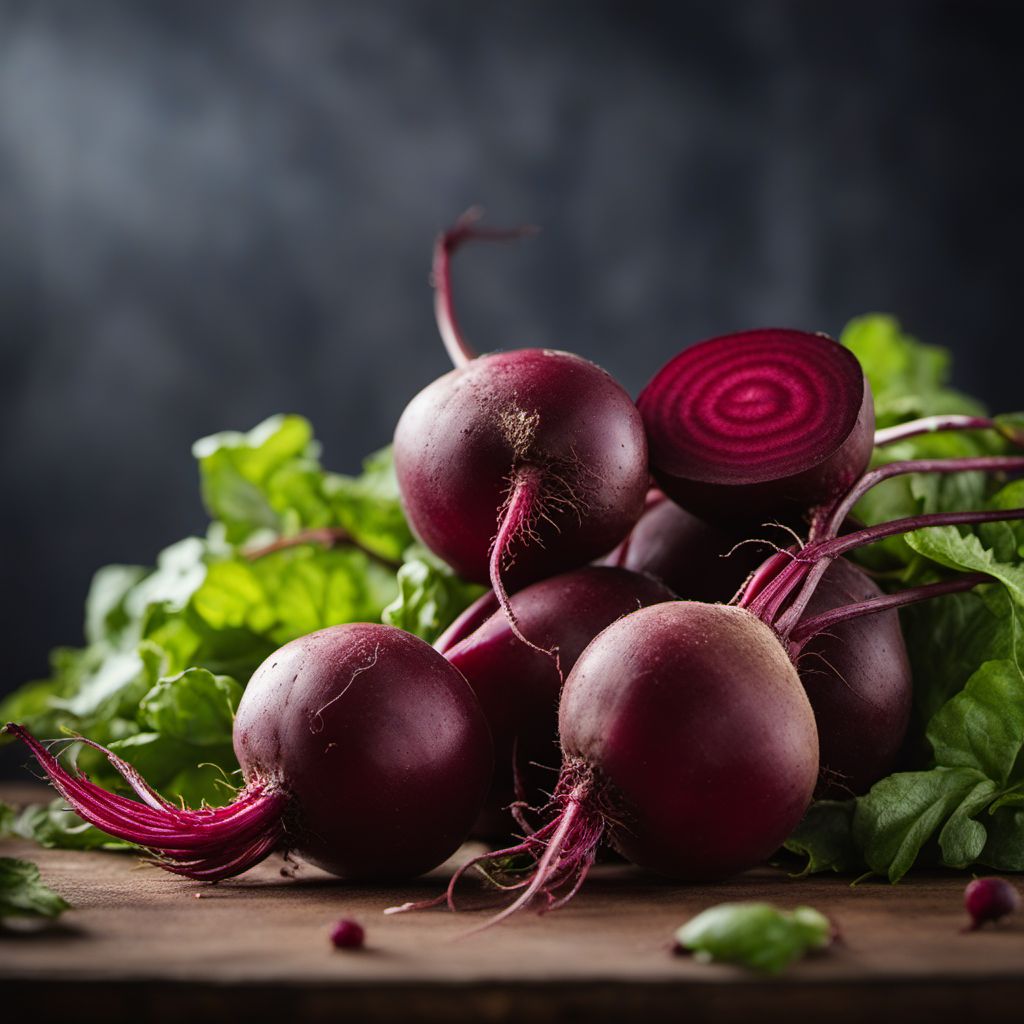
Ingredient
Beetroots and similar-
Vibrant Root Vegetables
Beetroots, also known as beets, are root vegetables with a deep red-purple hue and a sweet, earthy flavor. They have a firm yet tender texture and can be enjoyed raw, roasted, boiled, or pickled. Along with their vibrant appearance, beetroots are packed with essential nutrients and offer a range of health benefits.
Origins and history
Beetroots have been cultivated for thousands of years and have a rich history in various cuisines. They are believed to have originated in the Mediterranean region and were highly valued by the ancient Greeks and Romans for their medicinal properties. Over time, beetroots spread to different parts of the world, becoming a staple ingredient in Eastern European, Middle Eastern, and Indian cuisines.
Nutritional information
Beetroots are low in calories and fat, but rich in essential nutrients such as folate, manganese, and potassium. They are also a good source of dietary fiber and antioxidants, which contribute to their numerous health benefits.
Allergens
Some individuals may be allergic to beetroots, experiencing symptoms such as itching, swelling, or difficulty breathing. If you have a known allergy to beetroots or other root vegetables, it is best to avoid consuming them.
How to select
When selecting beetroots, choose ones that are firm, smooth, and free from blemishes or soft spots. The skin should be vibrant in color, and the greens should be fresh and crisp. Smaller beetroots tend to be sweeter and more tender than larger ones. If purchasing beetroots with the greens attached, ensure that the leaves are vibrant and not wilted.
Storage recommendations
To prolong the freshness of beetroots, remove the greens and store them separately in the refrigerator. Place the beetroots in a perforated plastic bag or airtight container and store them in the vegetable crisper. They can last for several weeks when stored properly.
How to produce
Beetroots can be easily grown in home gardens or containers. They thrive in well-drained soil and require regular watering. Sow the seeds directly in the ground or start them indoors and transplant them once the seedlings are established. Harvest the beetroots when they reach the desired size, usually around 2 to 3 months after planting.
Preparation tips
Before using beetroots, wash them thoroughly to remove any dirt or debris. The skin can be peeled or left intact, depending on personal preference and the recipe. Beetroots can be grated and added to salads, roasted for a caramelized flavor, boiled and mashed, or pickled for a tangy twist. The greens can also be cooked and enjoyed as a nutritious side dish.
Substitutions
Carrots, parsnips, and turnips can be used as substitutes for beetroots in certain recipes. However, keep in mind that the flavor and color may differ. For a similar vibrant color, purple carrots or radishes can be used as a substitute in salads or as a garnish.
Culinary uses
Beetroots are incredibly versatile and can be used in a variety of culinary applications. They can be enjoyed raw in salads, juiced for a refreshing beverage, roasted as a side dish, or incorporated into soups, stews, and risottos. They are also a popular ingredient in traditional dishes like borscht, a beet soup commonly found in Eastern European cuisines.
Availability
Beetroots are cultivated and consumed in various regions around the world, including Europe, North America, Asia, and Australia. They are readily available in grocery stores, farmers markets, and specialty food stores.
